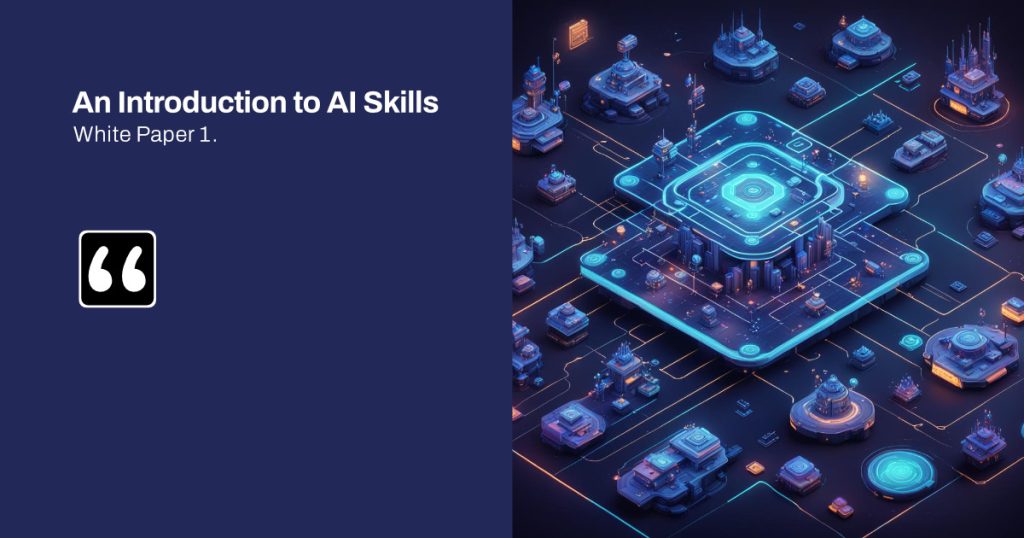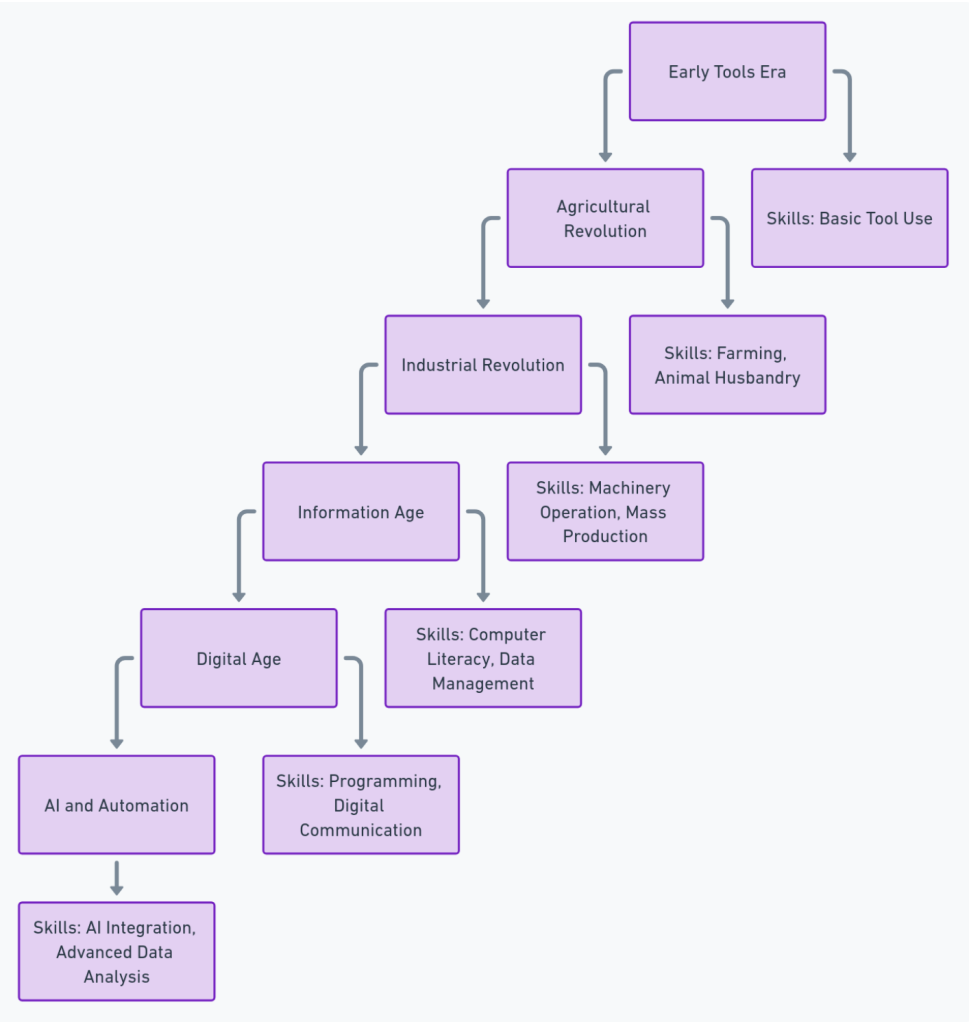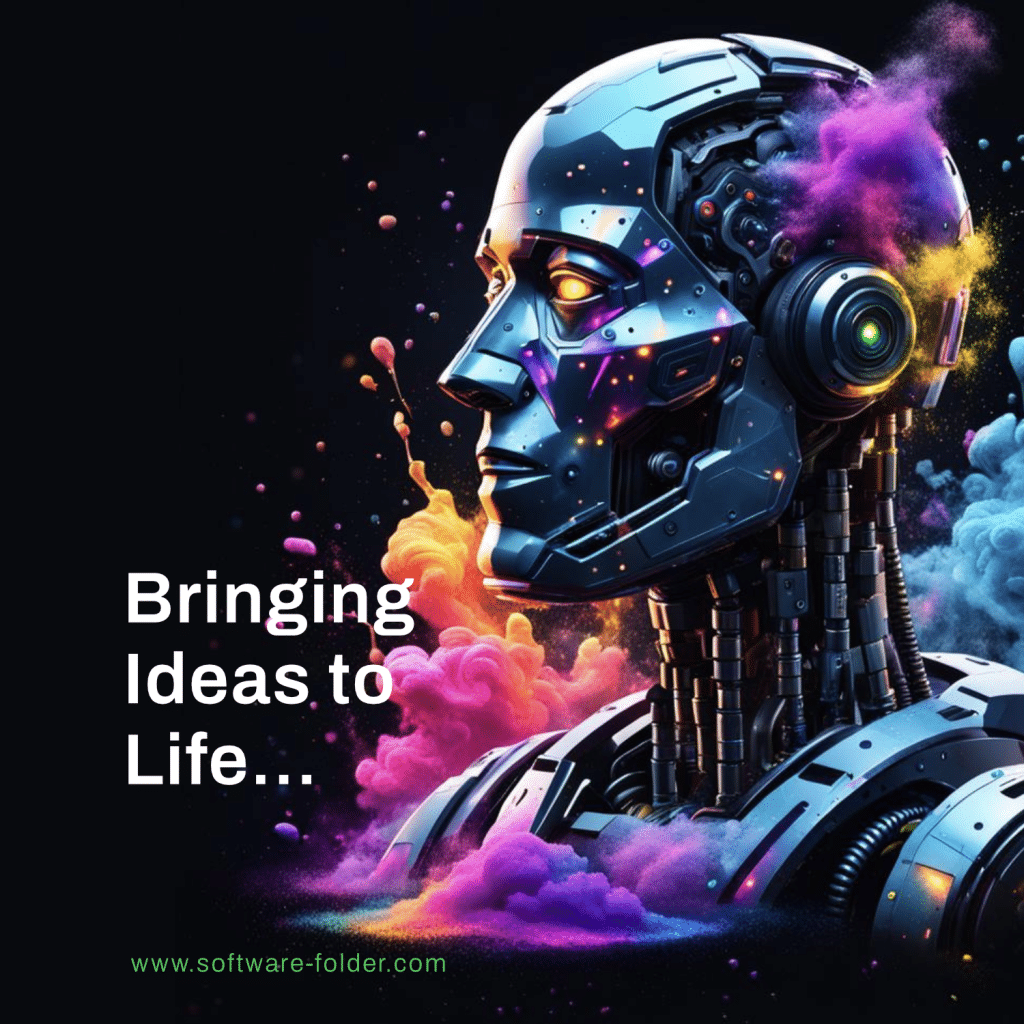This white paper examines the evolving relationship between technology and skill requirements in the modern workforce. It explores how artificial intelligence (AI) and automation are reshaping industries, creating a dynamic environment that demands continuous learning and adaptation. The paper highlights the dual nature of technology as both a driver of change and a facilitator of skill acquisition, emphasizing the importance of balancing technical proficiency with enduring human skills.

Old Skill for New Skills
Do you remember what it was like using a Rotring mechanical pen, or any other technical ink pen? Perhaps you recall using a drawing table with a set square and a parallel motion ruler.
Maybe you remember loading one of those 35mm rolls of film into your SLR camera, then going through the film developing stages—mixing chemicals to finally produce a photograph by passing light through your developed strips of film onto a sheet of light-sensitive photographic paper. Technology has undoubtedly made many creative industry production processes easier and much quicker to perform, empowering a great many more individuals with new skills and career opportunities.
The changing landscape of skill requirements.
Here is the flowchart illustrating how technology has dictated new skills over time:

Table of Contents: Paper 1.
How Tech Dictates New Skill Requirements
A Forever Evolving Creative Industry
The landscape of skill requirements in the creative industries is constantly evolving as technology advances. It is no longer enough to just have artistic talent; professionals need to be adaptable, willing to learn new skills, and able to keep up with the rapidly changing digital landscape. The future of creative work will likely continue to be shaped by technological advancements, and those who can adapt and embrace these changes will thrive in this new digital era.
With this ease of access to technology and software comes the need for new and different skills. The days of mastering the Rotring pen or developing film in a darkroom are becoming a distant memory. Now, graphic designers and photographers need to be proficient in programs like Adobe Photoshop and Illustrator, web designers need to understand coding languages like HTML and CSS, and video editors need to know how to use software like Adobe Premiere or Final Cut Pro. Even with these industry-standard software tools, AI technology has found its way into the creative industry, transforming the skill requirements and workflows for professionals.
The AI-Powered Workflow Objectives
While conventional creative workflows may be shortened through AI and automation technologies, the communicative aspects and objectives of the resulting work generally remain the end goal. This is especially true in creative fields that involve communicating through imagery and the written word. By integrating AI into these creative processes, professionals can focus more on the conceptual and strategic elements of their work, ensuring that the final product meets the desired technical standards and achieves its communicative objectives.
Professionals across these fields are now expected to integrate AI tools and techniques into their work without compromising the integrity of their intended objectives. For example:
- Graphic Designers and Photographers: AI-powered tools like Adobe Sensei offer features such as automated image editing, content-aware fills, and enhanced design suggestions. Designers must learn to leverage these AI capabilities to enhance their productivity and creativity. Understanding how to use AI-driven design platforms and tools, such as Canva’s AI design assistant or Luminar’s AI photo editing features, has become essential.
- Web Designers: AI technology, such as machine learning algorithms and AI-driven website builders powered with ADI (Artificial Design Intelligence), is revolutionizing web design. Web designers need to be proficient in using these AI tools to streamline the design process, automate coding tasks, and personalize user experiences. Knowledge of AI-based analytics and user behavior prediction is also becoming crucial.
- Video Editors: AI advancements have significantly impacted video editing, with tools like Adobe Premiere Pro integrating AI features for automatic color correction, scene detection, and motion tracking. Video editors must now be adept at using these AI functionalities to optimize their workflow, improve video quality, and create more engaging content. AI-powered platforms like Magisto and Lumen5, which automate video creation and editing, are also becoming important in the skill set of modern video editors.
- Graphic Design: AI can streamline the design process, automating repetitive tasks and offering innovative design suggestions, but the primary objective is still to communicate a message visually.
- Content Creation: Writers and content creators can use AI to generate ideas, draft content, and edit for grammar and style. However, the essence of the content must still resonate with the audience and fulfill the intended purpose.
- Video Production: AI can assist in editing, color grading, and even generating special effects, but the ultimate goal is to tell a story or convey information effectively through video.
- Music Composition: AI can help compose melodies, harmonize tracks, and even generate entire pieces of music, yet the emotional and artistic intent behind the music remains paramount.
Technology has significantly changed the creative industry, making production processes easier and quicker. Professionals in creative fields need to adapt and learn new skills to keep up with the rapidly changing digital landscape.
Inevitable and Potential Skills Arising from AI Technology in Creative Industries
AI Literacy: Understanding the fundamentals of AI and machine learning.
Data Analysis: Analyzing data to inform creative decisions.
Automation Proficiency: Using AI tools to automate repetitive tasks.
AI-Driven Design: Leveraging AI for design suggestions and enhancements.
Content Generation: Using AI to create and edit written and visual content.
Predictive Analytics: Utilizing AI to predict trends and user behaviors.
Personalization: Implementing AI to personalize user experiences.
AI Ethics: Understanding ethical considerations and biases in AI.
Technical Integration: Integrating AI tools with existing workflows.
AI Tool Management: Managing and maintaining AI software and platforms.
AI has long been in use across various creative industries, transforming how professionals approach their work. In graphic design, AI-powered tools like Adobe Sensei have been instrumental in automating image editing and generating design suggestions, significantly reducing the time required for mundane tasks. This allows designers to focus more on the creative and strategic aspects of their projects.
Similarly, in content creation, AI-driven platforms such as Grammarly and Copy.ai have been enhancing the writing process by offering real-time grammar checks, content suggestions, and even generating complete drafts based on user inputs. These tools have not only improved efficiency but also elevated the quality of the final output.
Businesses and individuals have greatly benefited from the integration of AI into creative workflows. For instance, marketing teams can now leverage AI to analyze vast amounts of data, enabling them to craft more targeted and effective campaigns. AI-driven analytics provide insights into customer behavior and preferences, allowing businesses to personalize their marketing efforts and enhance customer engagement.
On an individual level, freelancers and small business owners can access sophisticated AI tools that were once exclusive to large corporations, leveling the playing field and enabling them to compete more effectively. The ability to automate repetitive tasks and gain deeper insights through AI has empowered creatives to produce higher-quality work, innovate faster, and ultimately achieve better results in their respective fields.
Overall, technology has fundamentally transformed the way individuals acquire skills, making learning more accessible, efficient, and personalized. Online learning platforms, virtual simulations, and interactive software have opened up new avenues for education, allowing people to gain knowledge and expertise from anywhere in the world.
These technological advancements enable learners to progress at their own pace, revisit complex concepts, and engage with diverse learning materials. Additionally, technology facilitates continuous learning by providing access to the latest industry trends, research, and best practices, ensuring that individuals stay up-to-date with the evolving demands of their professions.
The Augmentation of Human Capabilities Through AI
AI is significantly augmenting human capabilities by automating repetitive tasks, enhancing decision-making processes, and providing insights that were previously unattainable. In creative industries, AI-powered tools can generate design suggestions, optimize content creation, and personalize user experiences, allowing professionals to focus on higher-order thinking and innovation.
For example, AI-driven analytics can predict consumer behavior, enabling marketers to craft more targeted campaigns. In healthcare, AI assists in diagnosing diseases and developing treatment plans, augmenting the capabilities of medical professionals. By handling routine tasks and offering data-driven insights, AI empowers individuals to achieve greater productivity and creativity in their work.
Strategies for Effective Skill Development in the AI Era
Effective skill development in the AI era requires a proactive and adaptive approach. Individuals should embrace lifelong learning, continuously updating their skills to stay relevant in their fields. Engaging in online courses, workshops, and certification programs focused on AI and related technologies can provide a solid foundation. Additionally, hands-on experience with AI tools and platforms is crucial for practical understanding and proficiency. Networking with industry professionals and participating in collaborative projects can also offer valuable insights and opportunities for growth.
Adapting to evolving industry needs involves staying informed about emerging trends and technologies. Reading industry reports, attending conferences, and following thought leaders can help individuals anticipate changes and prepare accordingly. Embracing a mindset of flexibility and openness to change is essential, as the rapid advancement of AI and technology will continue to reshape job roles and skill requirements. By taking a proactive approach to skill development and remaining adaptable, individuals can effectively navigate the dynamic landscape of the AI era and leverage new opportunities for personal and professional growth.
Related Content




